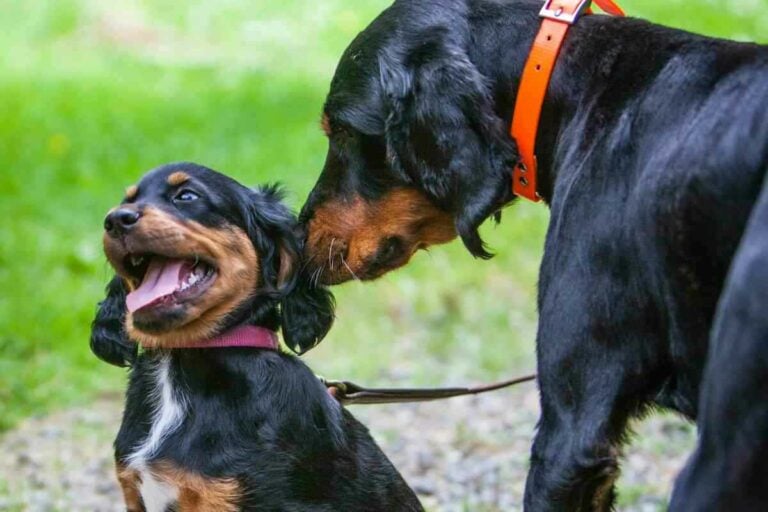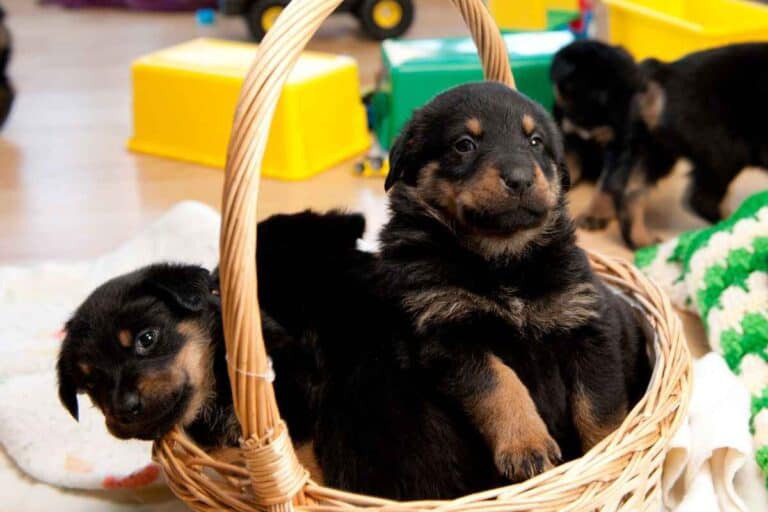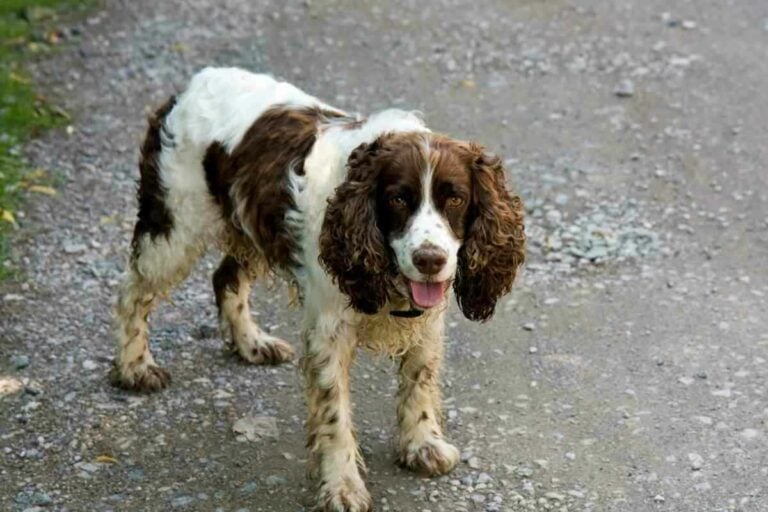10 Dog Breeds That Can Kill A Wolf (Or Stand A Chance)
For those who have livestock or live in areas where large predators are frequent visitors, you may wonder what breed of dog would be able to kill a wolf. Dogs were the first animals that humans domesticated and have been part of our lives for over 30,000 years. Though many of our pups can be protective at times, most aren’t capable of taking on a large predator.
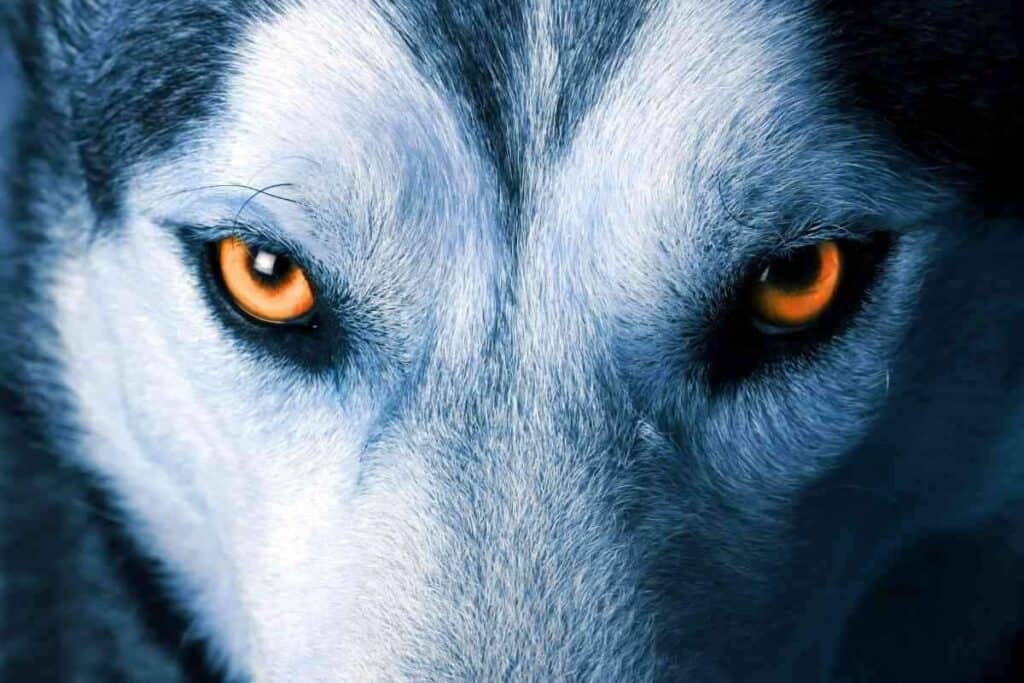
What are some breeds of dogs that can kill a wolf?
Following are the top 10 dog breeds that can kill a wolf:
- Kangal
- Sarplaninac
- Caucasian Shepherd
- Irish Wolfhound
- Mastiff
- Komondor
- Alabai
- Cane Corso
- Dogo Argentino
- Alaskan Malamute
We all bring pets into our homes for different reasons. If your need for a dog has less to do with companionship and more to do with protection, then keep reading to see why the above breeds will be a great addition. (Most of these breeds make great pets, as well as protectors!)
I have been a dog lover and owner all my life and find the differences in breed characteristics, mannerisms, and strengths to be a fascinating subject. If a dog’s predatory strength and ability to kill is a priority, my research is going to help you decide which of these ten breeds is best for you.
What Dogs Can Kill a Wolf?
For those who are interested in knowing what dogs can kill a wolf, the following is a table that ranks the 10 different dog breeds I outlined above and gives you a sense of their ability to kill a wolf, based on factors like their size, weight, and inherent breed characteristics.
| Dog Breed | Height | Weight | Origin |
| Kangal | 28-32” | 90-145 lbs | Turkey |
| Sarplaninac | 28-32” | 84-121 lbs | Yugoslavia |
| Caucasian Shepherd | 25-30” | 70-170 lbs | Russia |
| Irish Wolfhound | 30-33.5” | 100-130 lbs | Ireland |
| Mastiff | 26-31” | 130-200 lbs | England |
| Komondor | 25-30” | 80-120 lbs | Hungary |
| Alabai | 24-28” | 88-125 lbs | Central Asia |
| Cane Corso | 23.5-27.5” | 90-120 lbs | Italy |
| Dogo Argentino | 24-26.5” | 88-100 lbs | Argentina |
| Alaskan Malamute | 23-25” | 75-85 lbs | Siberia |
If you happen to live in a place that is frequented by wolves, you probably feel the need for a bit of protection, just in case one decides to get too close to your animals, family or property.
Having another predator, even a domesticated dog, will oftentimes be enough to deter a wolf from getting too close for your comfort.
Lots of dog breeds can scare away coyotes, but wolves are less easily intimidated.
But, if the visiting wolf isn’t easily intimidated, having one of the above breeds will ensure that you don’t have to worry about the wolf hurting your pet, your other animals, or your loved ones.
Let’s learn a bit more about each of these breeds:
The Kangal
The Kangal is originally from Turkey, where it was, and still is, used as a shepherd dog. The Kangal isn’t used to herd livestock, but instead to protect them. Not only will it threaten a large predator who dares to get too close, but the Kangal will also pursue it, hunt it down and kill it, even after the predator retreats.
These dogs are known for their massive chest size, curled tails, and black-masked face. The Kangal is believed to have the strongest bite of any domesticated dog on the planet.
Sarplaninac
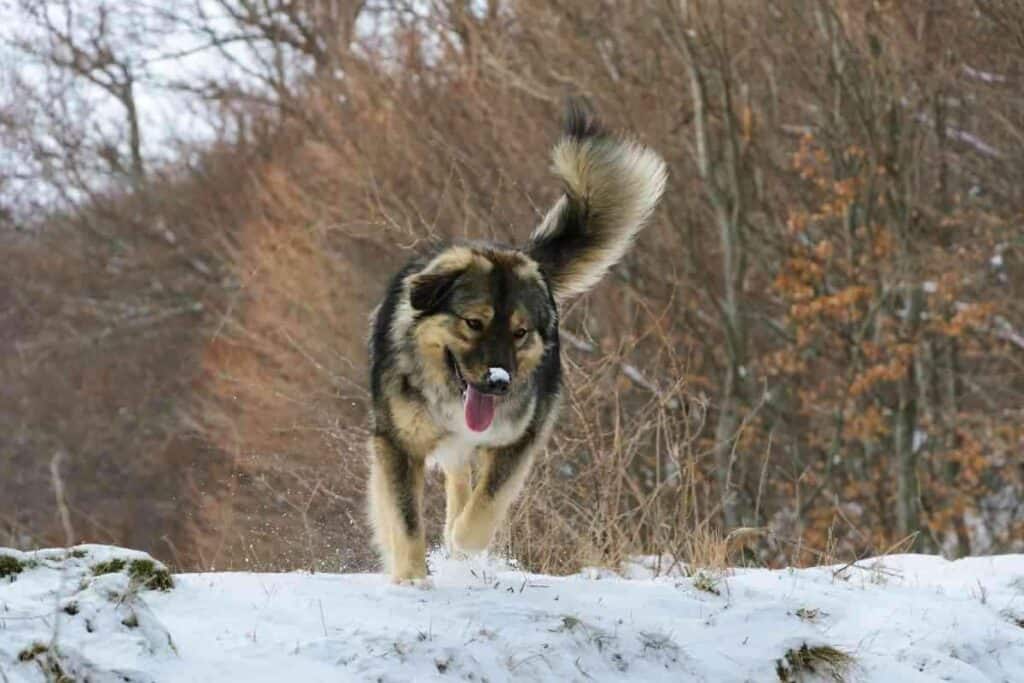
Originating in Yugoslavia, this dog needs a strong leader. Because of its massive size, strength, and leadership qualities, the Sarplaninac is not for novice dog owners.
Sarplaninacs are working dogs and are most content when they have a flock to watch over. They have a high attention span and will challenge anything that looks out of place to them.
Their thick dense coat makes it hard for a predator to sink its teeth into their skin. This, coupled with their aggressive, fearless nature means they will rarely find a foe who can successfully take them down. At least not without a big fight.
Caucasian Shepherd
The Caucasian Shepard is still one of the most popular breeds in Russia for its ability to work in the Caucasus mountain ranges, protect flocks, and serve as an excellent guard dog. They have a powerful, musculoskeletal structure and intimidating presence that makes them capable of hurting and even killing a wolf.
In more recent years, these dogs also serve as prison guard dogs. Even though it tends to be very strong-willed and independent, it also can be a great family dog, as it’s very loyal and will take commands from a strong pack leader.
Irish Wolfhound
Unlike some of the other breeds on this list, the Irish Wolfhound may not seem as powerful at first glance. Though this dog tends to be tall, its body isn’t as muscular-looking, which may make you question why it’s on this list.
But believe me, Irish Wolfhounds have earned their spot as one of the top breeds for killing predators, wolves included.
Though they were originally bred to be sighthounds (meaning they hunt by sight and sound, not smell) their speed and agility make them particularly good when they find themselves in a fight against an animal of equal or even larger size.
Their dark coats allow them to blend into their surroundings and are coarse and rough, making it difficult for a wolf to sink their teeth in.
Mastiff
This dog is aptly named, as its size makes it one of the largest on our list.
The Mastiff was originally bred to be a fighter and has earned its reputation, thanks to the aggressiveness of their nature and the fact they don’t like to back down. (Julius Caesar and Kublai Khan both had Mastiffs who fought beside them!)
Though the domesticated Mastiff can be raised to be a gentle giant, they will protect what they see as theirs. Their bite is stronger than a wolf and their innate desire to fight will be awakened when a predator enters its domain.
Komondor
One of the most unique-looking breeds on our list (or anywhere for that matter!) is the Komondor, also known as the English Sheep Dog. Despite the fact it looks like a large bathmat, this breed is capable of doing great damage to any foe who crosses its path.
Not only does the Komondor’s long, corded coat make it almost impossible for a wolf to get through to its skin, but this canine is also fast and fierce, capable of taking down a wolf and killing it.
Under that unique coat is a big-chested, heavy-boned brute that has strong protective instincts for its herd and will stop at nothing to protect it.
Alabai
Though this dog’s official name is the Central Asian Shepherd dog, it’s more commonly now known as the Alabai. (And, it’s no coincidence that it is also nicknamed Volkadov, or “Wolf Crusher” in Russian.)
This massive breed is one of the few that has evolved solely through natural selection. Whereas many dogs have been bred by humans to have certain characteristics, the Alabai’s sole goal was to survive in the wild.
Thus, the breed became well known for its strength, size, and survival skills. Among those skills are its ability to fend off predators such as wolves at all costs.
The Alabai has been used as a guardian of animal herds for years. These beasts make good pets and will protect you and yours for years to come, as their life expectancy is quite long for a dog of this size.
Cane Corso
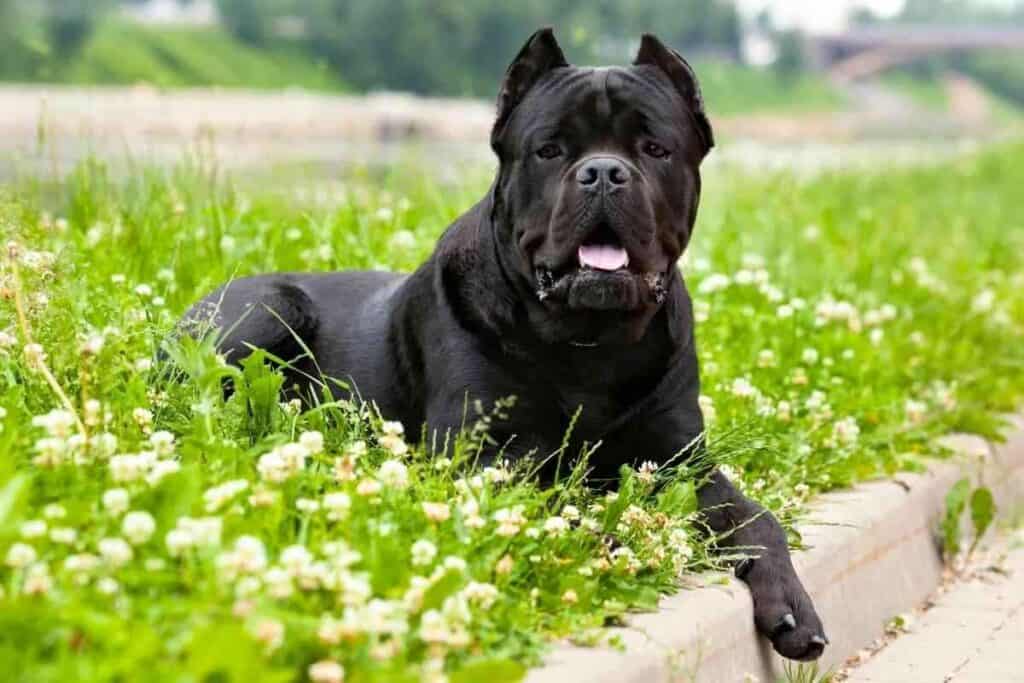
This Italian giant is imposing, with a large, flat head and powerful, broad shoulders. Unlike many of the other breeds on this list, the Cane Corso wasn’t bred to guard a flock, but instead, it was bred to be a hunting dog as it is great at finding and bringing down small prey, such as rabbits, and even larger animals, such as boars.
This canine is not only capable of being quite ferocious, but also has a good deal of agility and is fairly active. The Cane Corso has a heightened sense of sight, which gives it an advantage over dogs that tend to hunt by smell.
The Cane Corso’s bite is one of the strongest on this list and will rival that of a wolf if the two were to go to battle with one another. This Italian pooch is not one to take lightly!
Dogo Argentino
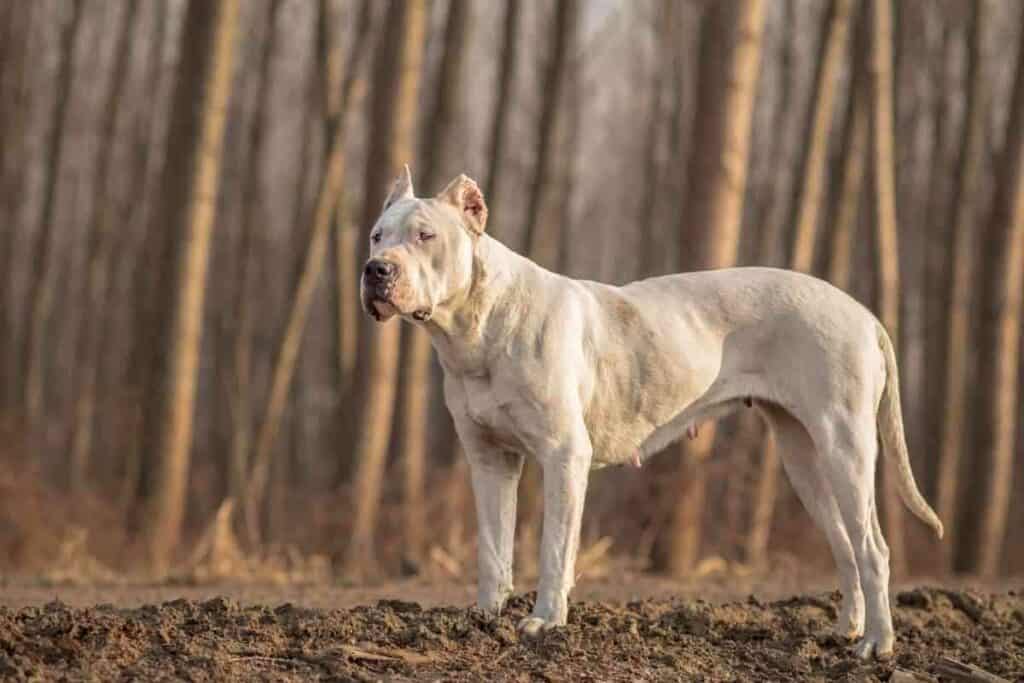
This Argentinian beauty was bred to be a big-game hunter, particularly wild boar. And, anyone who knows anything about a wild boar knows they aren’t something to mess with!
This white, muscular canine is known not only for its superior strength and courage but also as a fiercely loyal companion to its human pack mates. They can be extremely wary of strangers, and that includes the four-legged kind, such as any predator that crosses their paths or threatens their pack.
A wolf will have a hard time defending itself against the Dogo Argentino, especially if the Dogo feels it has to protect something or someone.
Athletic in nature, the Dogo Argentino has a strong nose, an amazing lung capacity, and explosive power. It’s also a highly intelligent animal and is amazingly adept at not only identifying a threat but also chasing it down and killing it.
Alaskan Malamute
The Alaskan Malamute is a beautiful animal, originally bred for being a sled dog and transporting people and their equipment across some of the world’s most unforgiving tundra.
The Malamute is a fiercely loyal companion with the kind of strength and stamina that makes it a breed not to be taken lightly when it comes to defending its own. Though not typically bred to be a guardian, a fighter, or a hunter, the Alaskan Malamute will not back down if it thinks something or someone it cares about is being threatened.
Unlike some of the other breeds I’ve explored on this list, the Alaskan Malamute is not usually larger than a typical wolf. Oftentimes the wolf may be bigger and stronger than a domesticated Malamute. But, given a Malamute’s fierce loyalty and substantial stamina, it will take on a wolf if it feels it has to defend a member of its pack.
How to Prevent an Encounter With a Wolf
Knowing your four-legged best friend could hold its own in a fight with a wolf is one thing…having it happen is another. Whether your dog is guarding livestock or just out with you for a hike, ensuring that it has minimal run-ins with a wolf is best for your pet and you.
Here are some things to think about to make sure you don’t have to find out if your canine can kill a wolf.
Look For Signs of Dens
If you live in an area prone to wolves, you may already know what a wolf den looks like. Wolves create homes that are quite modest and can be hard to tell apart from the terrain surrounding them.
If you live in an area that you already know is home to wolves, finding their dens may not make a difference in whether or not they pose a threat to you and your dog. But, knowing what you’re looking for when scouting for signs of wolf activity will give you a better idea of what you’re up against.
Install Coyote Rollers
If you are using fencing as well as a guard dog to keep predators away from your people or property, installing special animal-deterrents, called Coyote Rollers, will make your dog’s job easier. If you have a dog that likes to jump fences, this will also help.
If you have fencing around your property, these long, aluminum tubes will roll when an animal tries to hop a fence, serving as a first-level protectant before your dog has to get involved.
Neuter Your Animals
Regardless of how good your watchdog is, sometimes nature will still take over. A male dog who is not neutered may wander off if he smells a female wolf in heat. Similarly, a female guard dog will attract more attention from male wolves than necessary.
We should all be doing our part to keep the exploding animal population in control. But, in a situation where you don’t want to bring on an unnecessary conflict between your dog and a wolf, making sure your animals are neutered will help.

